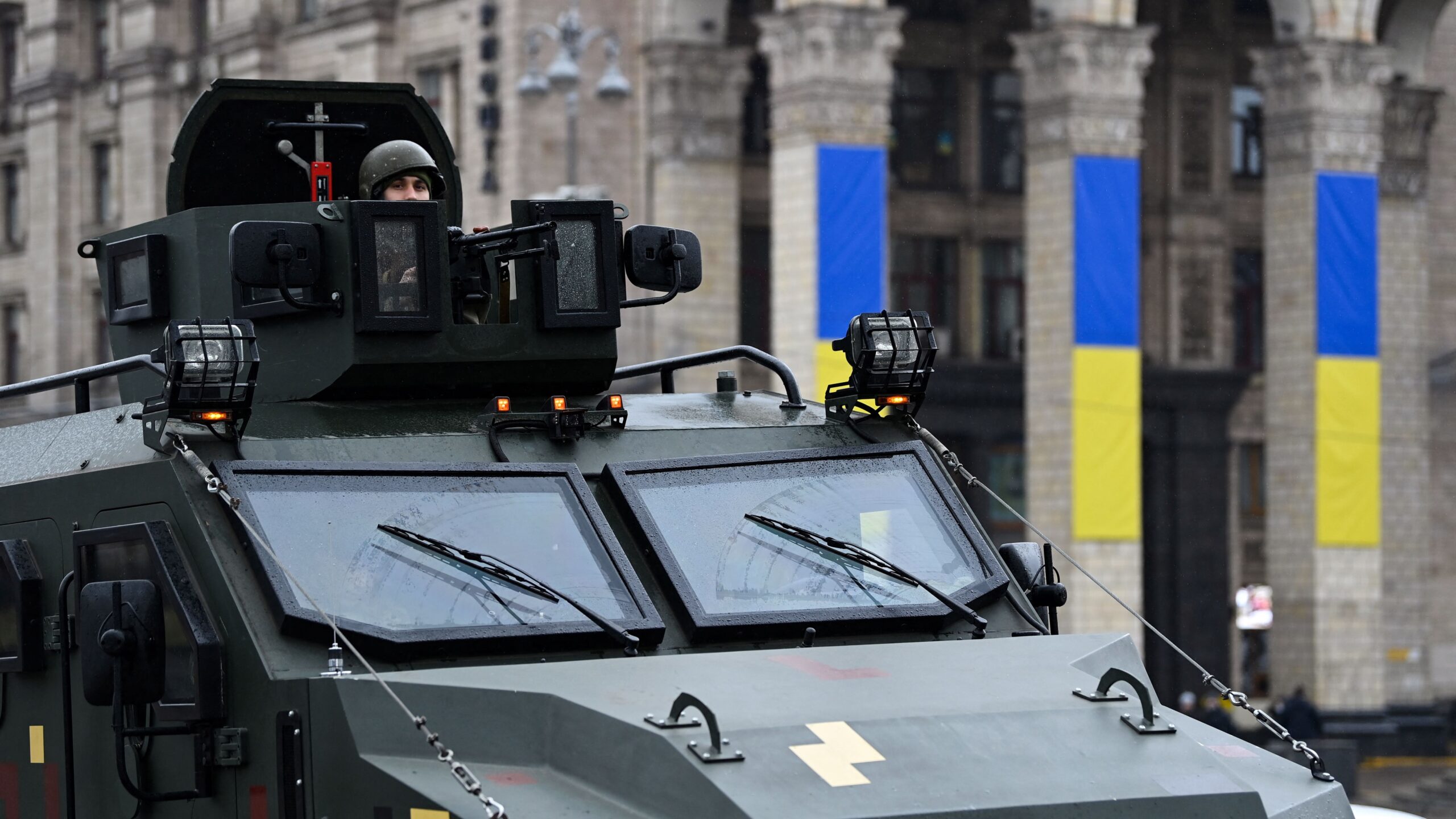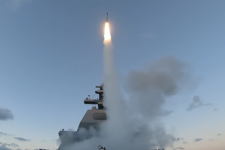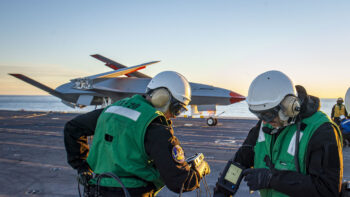
A Ukrainian serviceman rides atop a military vehicle past Independence square in central Kyiv on February 24, 2022. (Daniel LEAL / AFP via Getty Images)
WASHINGTON: Russia’s invasion of Ukraine — particularly its goal of a “decapitation” strike to the capital of Kyiv — is progressing more slowly than the Russian government had anticipated, a senior US defense official said today.
“The Russians have lost a little bit of their momentum. They are not advancing far or as fast as we believe they expected,” the official told reporters. “A good indicator of that is: No population centers have been taken. None.”
However, Russia has only tapped about a third of the forces it had previously amassed, which number in excess of 175,000 troops — meaning that Russian President Vladimir Putin still has “a lot of power at [his disposal,” the official added.
Russia continues to advance along three main routes. While Ukraine’s second largest city Kharkiv remains contested, Russia’s push toward Kyiv is moving more slowly than the Russians originally planned. Meanwhile, the US government now believes that Russian forces moving from Crimea will split, with a portion of troops moving toward Kherson and the others heading toward Mariupol.
For all of Breaking Defense’s coverage of the Ukraine situation, click here.
Ukrainian command and control appears to be intact, the US official said. Russia has not yet been able to gain air superiority in Ukrainian skies, as Ukraine remains able to launch military aircraft and its air and missile defense capabilities are still working, even though they have been degraded by Russian airstrikes.
However, the official also highlighted some troubling new activity by the Russian military.
There are indications an amphibious assault is underway, as Russia moves thousands of naval infantry ashore from the Sea of Azov to west of Mariupol. The United States’ current assumption is that those troops will move toward Mariupol, the official stated.
And there are also indications that Russian has conducted cyber attacks against the Kakhovka hydroelectric power plant, which controls much of the electrical power that supplies Crimea and southern Ukraine, said the official, who could not disclose the current status of the facility.
So far, Russia has fired more than 200 ballistic and cruise missiles.
The US official stated that “the bulk” of Russia’s targets appear to be military-related, including Ukrainian defensive capabilities, supply and logistics capabilities, air and missile defense assets — to include aircraft on the ground — as well as places where Ukrainian troops are located. However, some of its missiles have hit civilian residential areas, the official said.
“There has been loss of life. There have been casualties,” said the official, who declined to provide a number. “Each and every one of them could have been avoided if Mr. Putin had taken advantage of the diplomatic options he still had available to him. His war, his choice and it’s on his hands.”
While President Joe Biden has repeatedly made clear that he will not send US forces into Ukraine, on Thursday he announced a new deployment of about 7,000 troops to Germany, on top of previously announced deployments of troops and aircraft to the Baltic region.
This morning, NATO announced that it would active its rapid response force in order to fortify the defenses of allied nations that border Russia. The decision marks the first time NATO has activated its response force for the purposes of collective defense.
NATO heads of state issued a statement condemning Russia’s invasion of Ukraine and declaring that the alliance was prepared “to respond to a range of contingencies and secure alliance territory.”
“We are now making significant additional defensive deployments of forces to the eastern part of the Alliance. We will make all deployments necessary to ensure strong and credible deterrence and defence across the Alliance, now and in the future,” the statement reads. “Our measures are and remain preventive, proportionate and non-escalatory.”
Pentagon Press Secretary John Kirby said during a briefing later this afternoon that a “good chunk” of the troops announced by Biden on Thursday would deploy to Germany could instead be earmarked for the NATO response force.
Lockheed wins competition to build next-gen interceptor
The Missile Defense Agency recently accelerated plans to pick a winning vendor, a decision previously planned for next year.


























